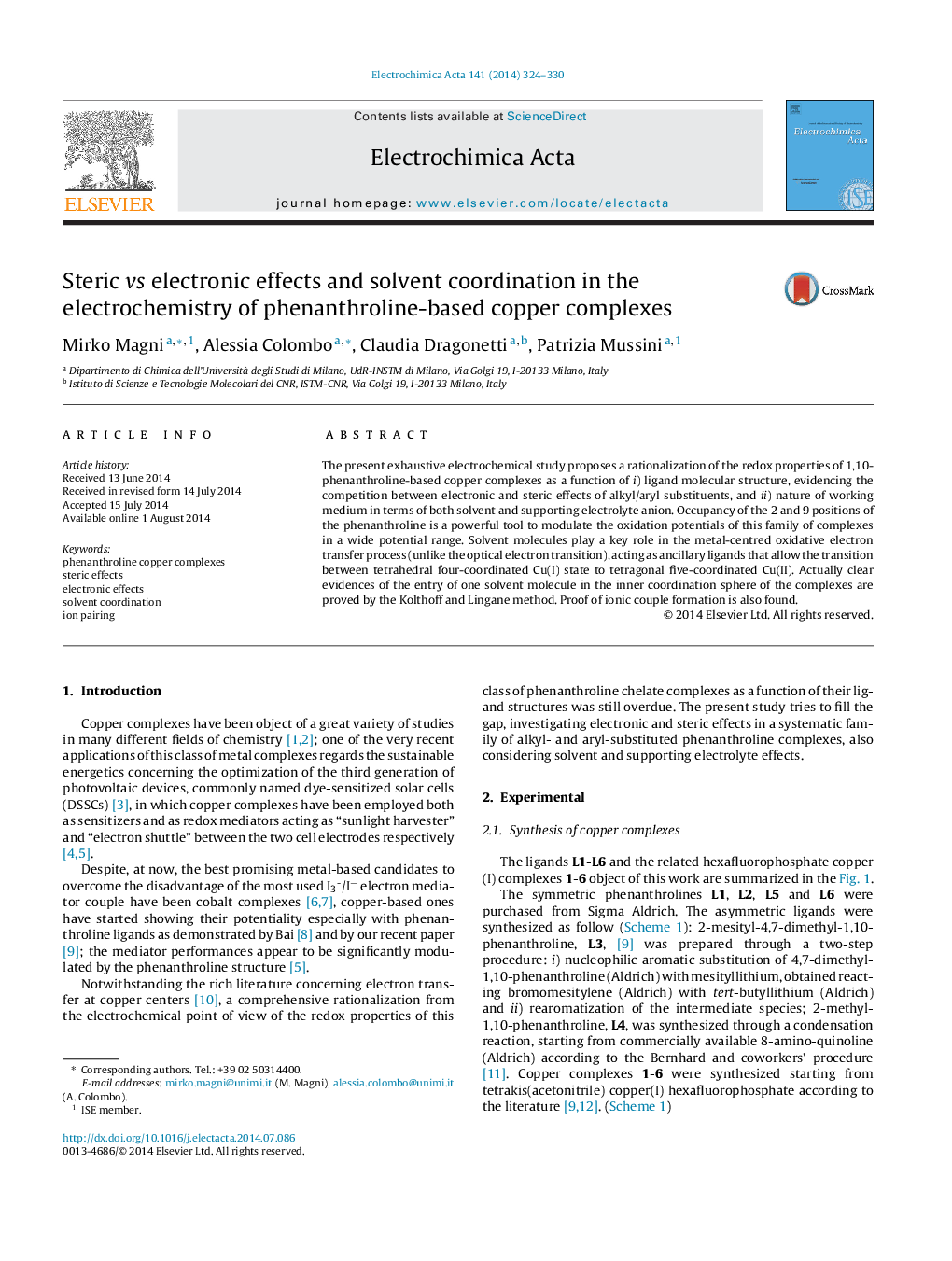| Article ID | Journal | Published Year | Pages | File Type |
|---|---|---|---|---|
| 185306 | Electrochimica Acta | 2014 | 7 Pages |
•Tailoring redox properties of phenanthroline copper complexes.•Metal core-based oxidation is rationalized in terms of structural effects.•Fundamental is the number of kiss lock substituents in the internal 2,9 positions.•In spite of no solvatochromism, the medium heavily affects oxidation processes.•Kolthoff and Lingane method gives us proof that DMF acts as ancillary ligand.
The present exhaustive electrochemical study proposes a rationalization of the redox properties of 1,10-phenanthroline-based copper complexes as a function of i) ligand molecular structure, evidencing the competition between electronic and steric effects of alkyl/aryl substituents, and ii) nature of working medium in terms of both solvent and supporting electrolyte anion. Occupancy of the 2 and 9 positions of the phenanthroline is a powerful tool to modulate the oxidation potentials of this family of complexes in a wide potential range. Solvent molecules play a key role in the metal-centred oxidative electron transfer process (unlike the optical electron transition), acting as ancillary ligands that allow the transition between tetrahedral four-coordinated Cu(I) state to tetragonal five-coordinated Cu(II). Actually clear evidences of the entry of one solvent molecule in the inner coordination sphere of the complexes are proved by the Kolthoff and Lingane method. Proof of ionic couple formation is also found.
Graphical abstractFigure optionsDownload full-size imageDownload as PowerPoint slide
